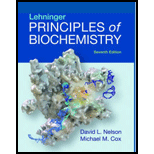
Concept explainers
(a)
To determine: The effects on the
Introduction:
Researchers have manipulated mouse genes so that a single gene in a particular tissue either produces an active protein or produces an inactive protein. The inactivation of protein (knockout) or production of active protein should be in continuation.
(b)
To determine: The effects on metabolism with genetic change such as knockout of hexokinase IV in the liver.
Introduction:
Metabolism is the “sum of the
(c)
To determine: The effects on metabolism with genetic change such as knockout of FBPase-2 in the liver.
Introduction:
Researchers have manipulated mouse genes so that a single gene in a particular tissue either produces an active protein or produces an inactive protein. The inactivation of protein (knockout) or production of active protein should be in continuation.
(d)
To determine: The effects on metabolism with genetic change such as constitutively active FBPase-2 in the liver.
Introduction:
Metabolism is the “sum of the chemical reactions that occur within the body”. It controls the chemical reactions and cellular structure in an organism. Metabolic energy is stored in the form of chemical bonds of ATP.
(e)
To determine: The effects on metabolism with genetic change such as constitutively active AMPK in muscle.
Introduction:
Metabolism is the “sum of the chemical reactions that occur within the body”. There are two categories of metabolism: catabolism and anabolism. Breakdown of molecules in the body to obtain energy is catabolism while synthesis of compounds required by the body using energy is known as anabolism.
(f)
To determine: The effects on metabolism with genetic change such as constitutively active ChREBP in the liver.
Introduction:
Metabolism is the “sum of the chemical reactions that occur within the body”. It controls the chemical reactions and cellular structure in an organism. Metabolic energy is stored in the form of chemical bonds of ATP.
Want to see the full answer?
Check out a sample textbook solution
Chapter 15 Solutions
Lehninger Principles of Biochemistry
- Biochemistry Question Please help. Thank you What is the function of glutamate dehydrogenase?arrow_forwardBiochemistry Question Please help. Thank you How and why does a high protein diet affect the enzymes of the urea cycle?arrow_forwardBiochemistry What is the importance of the glucose-alanine cycle?arrow_forward
- Biochemistry Assuming 2.5 molecules of ATP per oxidation of NADH/(H+) and 1.5molecules of ATP per oxidation of FADH2, how many ATP are produced per molecule of pyruvate? Please help. Thank youarrow_forward1. How would you explain the term ‘good food’? 2. How would you define Nutrition? 3. Nutrients are generally categorised into two forms. Discuss.arrow_forwardBiochemistry Question. Please help solve. Thank you! Based upon knowledge of oxidation of bioorganic compounds and howmuch energy is released during their oxidation, rank the following, from most to least, with respect to how much energy would be produced from each during their oxidation. Explain your placement for each one.arrow_forward
- Biochemistry Question.For the metabolism of amino acids what is the first step for theirbreakdown? Why is it necessary for this breakdown product to be transported to the liver? For the catabolism of the carbon backbone of these amino acids, there are 7 entry points into the “standard” metabolic pathways. List these 7 entry points and which amino acids are metabolized to these entry points. Please help. Thank you!arrow_forwardBiochemistry Question. Please help. Thank you. You are studying pyruvate utilization in mammals for ATP production under aerobic conditions and have synthesized pyruvate with Carbon #1 labelled with radioactive C14. After only one complete cycle of the TCA cycle, which of the TCA cycle intermediates would be labeled with C14? Explain your answer. Interestingly, you find C14 being excreted in the urine. How does it get there?arrow_forwardBiochemistry question. Please help with. Thanks in advance For each of the enzymes listed below, explain what the enzyme does including function, names (or structures) of the substrate and products and the pathway(s) (if applicable) it is/are found in. (a) ATP synthetase (b) succinate dehydrogenase (c) isocitrate lyase (d) acetyl CoA carboxylase (e) isocitrate dehydrogenase (f) malate dehydrogenasearrow_forward
- Draw and name each alcohol and classify it as primary, secondary, or tertiary. Explain your answer thoroughly.arrow_forwardDraw the product of each reaction. If there are multiple products, draw only the major product. Explain your answer thoroughly.arrow_forwardIdentify the type of bond in the following disaccharides. Number your carbons to show work. Explain your answer thoroughly. Draw the number of carbons also.arrow_forward
 BiochemistryBiochemistryISBN:9781319114671Author:Lubert Stryer, Jeremy M. Berg, John L. Tymoczko, Gregory J. Gatto Jr.Publisher:W. H. Freeman
BiochemistryBiochemistryISBN:9781319114671Author:Lubert Stryer, Jeremy M. Berg, John L. Tymoczko, Gregory J. Gatto Jr.Publisher:W. H. Freeman Lehninger Principles of BiochemistryBiochemistryISBN:9781464126116Author:David L. Nelson, Michael M. CoxPublisher:W. H. Freeman
Lehninger Principles of BiochemistryBiochemistryISBN:9781464126116Author:David L. Nelson, Michael M. CoxPublisher:W. H. Freeman Fundamentals of Biochemistry: Life at the Molecul...BiochemistryISBN:9781118918401Author:Donald Voet, Judith G. Voet, Charlotte W. PrattPublisher:WILEY
Fundamentals of Biochemistry: Life at the Molecul...BiochemistryISBN:9781118918401Author:Donald Voet, Judith G. Voet, Charlotte W. PrattPublisher:WILEY BiochemistryBiochemistryISBN:9781305961135Author:Mary K. Campbell, Shawn O. Farrell, Owen M. McDougalPublisher:Cengage Learning
BiochemistryBiochemistryISBN:9781305961135Author:Mary K. Campbell, Shawn O. Farrell, Owen M. McDougalPublisher:Cengage Learning BiochemistryBiochemistryISBN:9781305577206Author:Reginald H. Garrett, Charles M. GrishamPublisher:Cengage Learning
BiochemistryBiochemistryISBN:9781305577206Author:Reginald H. Garrett, Charles M. GrishamPublisher:Cengage Learning Fundamentals of General, Organic, and Biological ...BiochemistryISBN:9780134015187Author:John E. McMurry, David S. Ballantine, Carl A. Hoeger, Virginia E. PetersonPublisher:PEARSON
Fundamentals of General, Organic, and Biological ...BiochemistryISBN:9780134015187Author:John E. McMurry, David S. Ballantine, Carl A. Hoeger, Virginia E. PetersonPublisher:PEARSON





